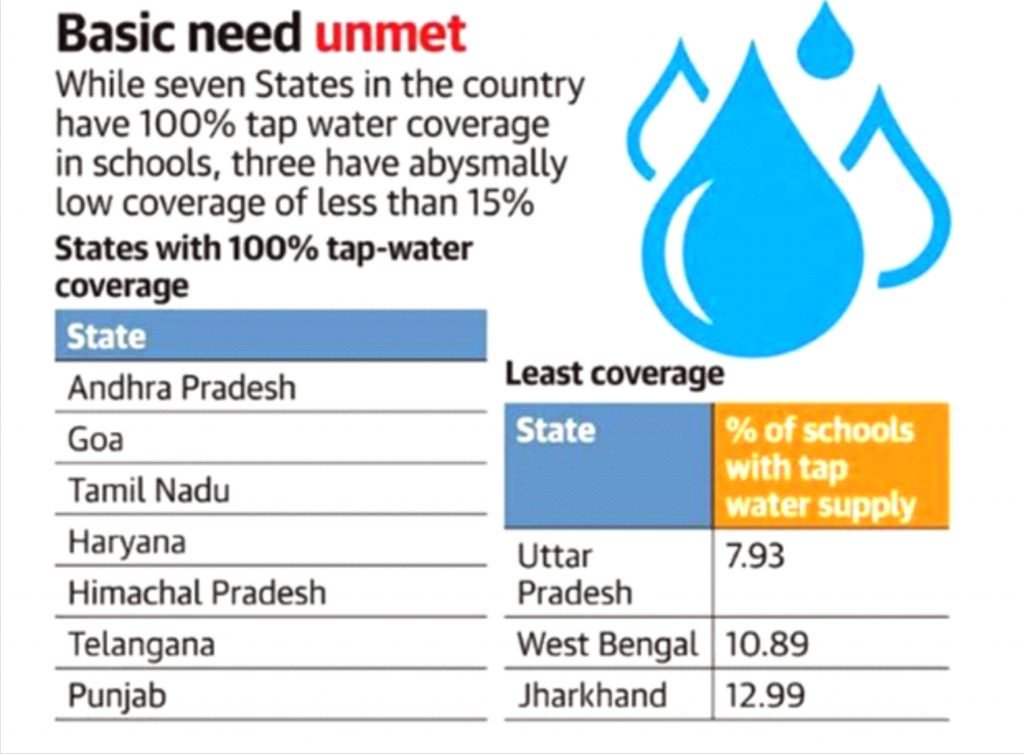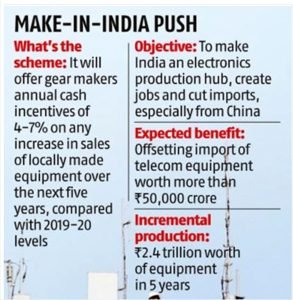Current Affairs (10th March 2021)
Cyber-security
Context:
- On 12 October 2020, Mumbai plunged into darkness as the electric grid supply to the city failed.
- Just recently, a study by Massachusetts-based Recorded Future, a firm that specialises in studying the use of the internet by states, said that the Mumbai power outage could have been a cyberattack aimed at critical infrastructure and was probably intended as a message from China.
- It was carried out by the state-sponsored group Red Echo, which has close ties to the People’s Liberation Army (PLA) China.
About:
- India’s power minister denied reports that a cyberattack was the cause of the power failure, although Maharashtra’s power minister informed the state assembly on the same day that the Mumbai Cyber Police investigation had suggested a possible cyberattack with an intent to disrupt power supply.
- As recently as in February, the Centre’s nodal agency National Critical Information Infrastructure Protection Centre (NCIIPC) had reported concerted attempts by Red Echo to hack the critical grid network.
- Another government agency, CERT-In, is reported to have detected the ShadowPad malware in one of the largest supply chain attacks a month after the Mumbai outage. Many of the suspected IP addresses identified by NCIIPC and CERT-In were the same and most have been blocked in time.
- What remains to be seen is if there is conclusive proof of Chinese involvement in such surreptitious attacks through proxies, although spoofing often saves the actual perpetrator from identification.
- The Chinese focus in the past was stealing information and not projecting power, but the situation with India might be different.
CRITICAL INFRASTRUCTURE
- It has become increasingly vulnerable to cyber-attacks. The power grid ecosystem is a major target of such attempts.
- Analysing the general techniques used by state-sponsored hacker groups, a trend of multi-stage attacks has been observed.
- In recent attacks on global power grids, the attacker targeted the enterprise network of the power company and then gradually climbed into the control systems network, which is responsible for managing, generating and distributing power.
- As many of these critical infrastructures were never designed keeping security in mind and always focused on productivity and reliability, their vulnerability is more evident today.
- With devices getting more interconnected and dependent on the internet facilitating remote access during a pandemic, the security of cyber-physical systems has, indeed, become a major challenge for utility companies.
CONCERNS ABOUT CRITICAL INFORMATION INFRASTRUCTURE PROTECTION (CIIP)
- In January 2014, the NCIIPC was notified to be the national nodal agency for CIIP and over these years has been working closely with the various agencies.
- In January 2019, the government also announced a National Mission on Interdisciplinary Cyber-Physical Systems (NM-ICPS), with a budget of Rs 3,660 crore for the next five years, to strengthen the sector.
- However, most ministries and departments need better budget allocations for cyber security as well as a more robust infrastructure, processes and audit system.
- The Industrial Cybersecurity Standards (IEC62443) aimed at providing a flexible framework to address and mitigate current and future security in industrial automation and control systems, launched by the Bureau of Indian Standards (BIS), has to be adopted soon.
- For the power sector, a strong regulation on the lines of the North American Electric Reliability Critical Infrastructure Protection (NERC) policy could serve as a guide so that the public and private sector utility companies in India harden and secure their operational technology (OT) networks.
CONCLUSION:
- Clearly, the incident is a wake-up call for better preparedness in terms of a more robust cyber security ecosystem in place.
- The new cyber security policy awaiting imminent announcement will hopefully cater to that. So far, India has done well to protect critical networks like the sensitive Aadhaar ecosystem, the income tax department and the core banking systems.
- The road ahead will be tougher as far as cyber networks are concerned. Only the fittest and most vigilant will survive.
Chabahar port
CONTEXT:
- India expressed its intent to include Chabahar port in the 13-nation International North South Transport Corridor (INSTC).
INSTC
- It extends from India to Russia, and to expand INSTC membership by including Afghanistan and Uzbekistan, at a “Chabahar Day” event organised as part of Maritime India summit.
- This Summit saw participation from several regional officials including infrastructure Ministers from Afghanistan, Armenia, Iran, Kazakhstan, Russia and Uzbekistan.

Stand of India:
- Establishing an eastern corridor through Afghanistan would maximise its potential
- India proposed that the land route via Kabul (Afghanistan) and Tashkent (Uzbekistan) would form the INSTC’s “Eastern corridor”.

Tap water supply
Context:
- According to the Parliamentary Standing Committee on Water Resources, only half of government schools and anganwadis have tap water supply.
About:
- Despite a 100-day campaign for 100% coverage being launched by the Jal Shakti Ministry in October 2020, there is a shortage of tap water supply.
- The Committee also noted the progress of the flagship Jal Jeevan Mission.
Campaign:
- Aim: to provide potable piped water supply for drinking and cooking purposes and tap water for hand washing and in toilets in every school, anganwadi and ashramshala or residential tribal school.
- Launched on 2 October, 2020
- Duration :100-days period should have ended on 10th January, 2021.
- However, some States/ UTs have indicated that they need more time to complete the task and sustain the efforts. Therefore, the campaign has been extended till 31st March, 2021.
Findings:
- As of now, only 48.5% of anganwadis and 53.3% of schools had tap water supply.
- Less than 8% of schools in Uttar Pradesh and 11% in West Bengal have it.
- It is available in only 2-6% of anganwadis in Assam, Jharkhand, U.P., Chhattisgarh and Bengal.
- Seven States – Andhra Pradesh, Goa, Haryana, Himachal Pradesh, Tamil Nadu, Telangana and Punjab – achieved 100% coverage.
- Around 1.82 lakh grey water management structures and 1.42 lakh rainwater harvesting structures were also constructed in schools and anganwadi centres.

Quasar/P172+18
Context:
- An international team of astronomers has discovered the most distant ‘Radio-Loud’ Quasar with the help of European Southern Observatory’s Very Large Telescope (ESO’s VLT).
- Named P172+18, the quasar emitted wavelengths which had a redshift of 6.8.
About:
- This particular quasar appears to the scientists as it was when the universe was just around 780 million years old.
- The glowing disc around a blackhole is 300 million times more massive than our Sun.
- It is also one of the fastest accreting quasars, which means it is accumulating objects from the galaxy at an enormous speed.
- Only three other ‘radio-loud’ sources with redshift greater than six have been discovered so far and the most distant one had a redshift of 6.18.

Pre-pack framework
Context:
- A sub-committee of the Insolvency Law Committee (ILC) has recommended a pre-pack framework within the basic structure of the Insolvency and Bankruptcy Code (IBC), 2016.
About:
- A sub-committee of Insolvency Law Committee (ILC) was constituted in June, 2020 under the chairmanship of Dr. M. S. Sahoo, Chairperson, Insolvency and Bankruptcy Board of India (IBBI) to make recommendation on Pre-Pack Insolvency Resolution Process (PPIRP).
What is Pre-Packs?
- Agreement for the resolution of the debt of a distressed company through an agreement between secured creditors and investors instead of a public bidding process.
- In India’s case, such a system would likely require that financial creditors agree on terms with potential investors and seek approval of the resolution plan from the National Company Law Tribunal (NCLT).
- It usually requires services of an insolvency practitioner to assist the stakeholders in the conduct of the process.
- The extent of authority of the practitioner varies across jurisdictions.
Why its needed?
- Slow progress in the resolution of distressed companies has been one of the key issues raised by creditors regarding the Corporate Insolvency Resolution Process (CIRP) under the IBC.
Features:
- Envisages a consensual process
- No requirement of Court Approval
| Advantages | Disadvantages |
|
|
Telecom sector
Context:
- The Union Cabinet has approved the Production-Linked Incentive (PLI) scheme for the telecom sector over five years with an outlay of Rs. 12,195 crores.

About:
- This Scheme is for domestic manufacturing of telecom and networking products like switches, routers, 4G/5G radio access network, wireless equipment and other internet of things (IoT) access devices.
- Operational from 1 April, 2021
- An investor who qualifies for the scheme will be incentivised up to 20 times the minimum investment threshold,enabling them to utilise their unused capacity.


